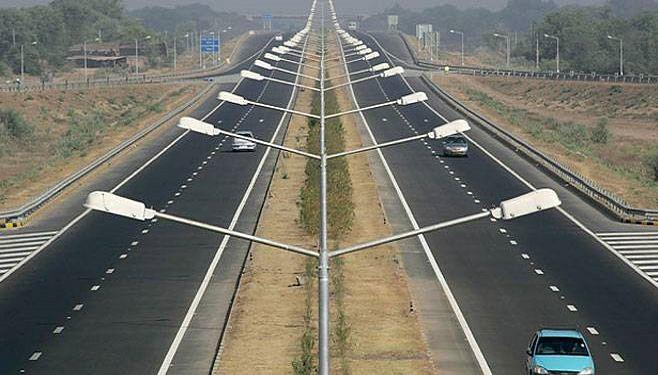Modi government is all set to launch Bharatmala 2.0 which will focus on expressways. Under Bharatmala 2.0, the government plans to build 4,000 km of greenfield roads. The expressways which will allow uninterrupted traffic flow will connect various cities including Varanasi-Ranchi-Kolkata, Indore-Mumbai, Bengaluru-Pune and Chennai-Trichy. National Highway Authority of India (NHAI), the autonomous agency of the government of India is entrusted with the building of expressways. The invitation for project implementation has been called by the highway development agency. “It took us about two years to prepare detailed project reports (DPRs) for phase one of Bharatmala. Undertaking DPR preparation for the next lot of projects will help save time and the focus is on preparing high-quality detailed reports for faster execution,” said a highway ministry official.
The maximum speed of cars on expressways has been increased to 120 kmph. Most of the projects which are to be undertaken are greenfield alignment which means there will be new roads. Most of the highway projects implemented earlier were expansion and widening of existing networks. The identified greenfield projects include Patna-Rourkela, Jhansi-Raipur, Solapur-Belgaum, Bengaluru-Kadappa-Vijayawada, Gorakhpur-Bareilly and Varanasi-Gorakhpur. The target year for rolling out these projects of Bharatmala phase-II is 2024.
Bharatmala Project is a comprehensive road project to connect the various nerve points of the country as well as the passages to the outside world. Under the Bharatmala Project, thousands of kilometers of roads will be constructed for connecting borders, coastal areas, ports, religious and tourist sites along with establishing international connectivity. In this scheme, those roadway schemes will be selected first which are incomplete or pending, which is to say those roads whose construction was not completed or the construction work was stopped for some or the other reason.
Expenditure of about 7 to 10 lakh crore rupees is expected on this ambitious project which will connect the states of Rajasthan, Punjab, Jammu and Kashmir, Himachal Pradesh, Uttarakhand, Uttar Pradesh, Bihar, West Bengal, Sikkim, Assam, Arunachal Pradesh, Manipur and Mizoram with one another.
2.09 lakh crore rupees for the Bharatmala project will be raised from the market, 1.06 lakh crore from private investment and 2.19 lakh crore from toll collection (TOT). TOT means toll, opera and transfer under which the Construction company will collect toll for 20 or 30 years and then hand the road over it to the government. Under this, contracts of 82 executed projects will be given to TOT.
Modi government has been very efficient in terms of improving connectivity. Be it in the field of railway or power, road construction or the development of commercial routes connected to the ports, sincere efforts are being made to enhance connectivity.
The pace of construction has been growing steadily since the NDA government assumed power in May 2014. Compared with 4,216-km highway construction in 2013-14, the number grew to 4,410 km in 2014-15, 6,061 km in 2016-17 and 8,142 km in 2017-18.
In addition to this, more than 30,000 km of roads were constructed by the Modi government under the Prime Minister’s Gram Sadak Yojna (PMGSY) in left-wing extremism-affected areas up to 2016. “Since inception of PMGSY, a total length of 30,081 km road has been completed up to October 2016 in left-wing extremism-affected districts,” MoS for Rural Development Ram Kripal Yadav said in the parliament in 2016.
In reality, during the time of previous governments, railways, roads and airstrips were more of a poll time gimmick. These were things that the ministers and the government had limited to their own political constituencies strictly for vote bank politics, but with the policy of the Modi government of ‘Sabka Saath Sabka Vikas” in play, a fresh new story about India’s inclusive growth is being written and we are fortunate to witness it.































